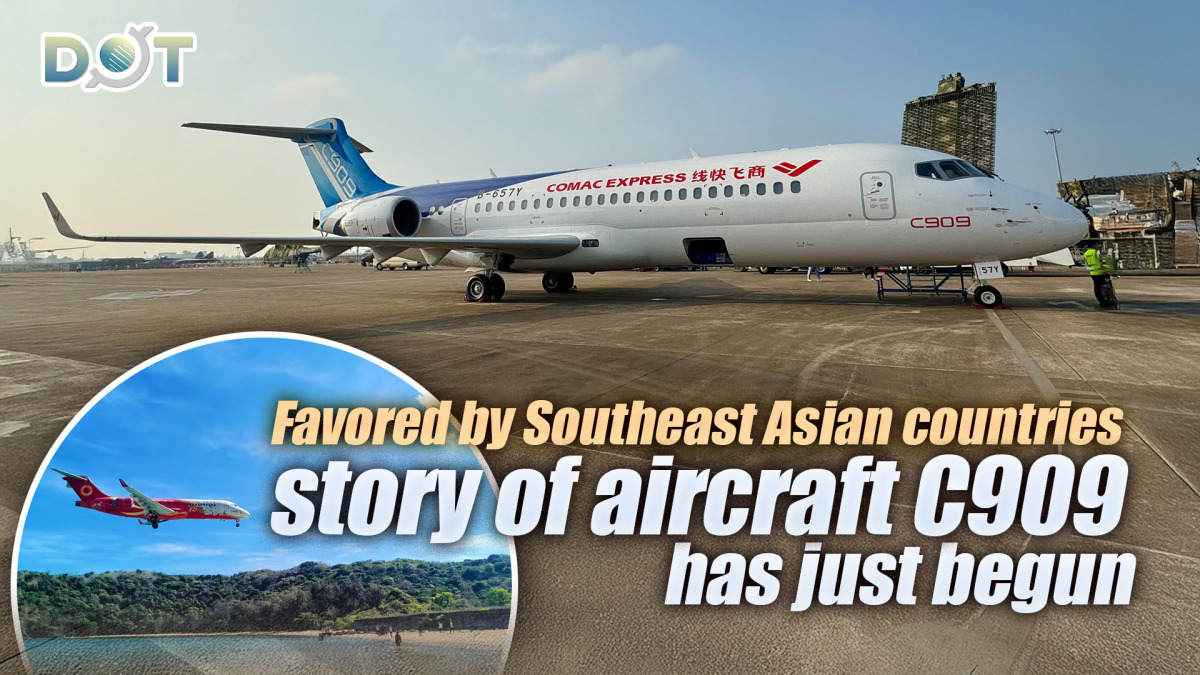
On April 19, VietJet Air officially opened two new routes from Hanoi to Con Dao and Ho Chi Minh City to Con Dao, using the C909 passenger aircraft manufactured by China's COMAC rather than Boeing or Airbus.
This marks the first entry of a Chinese-made civil aviation aircraft into the Vietnamese market, symbolizing a significant breakthrough for China's aviation industry in Southeast Asia.
Meanwhile, countries like Malaysia are also considering introducing Chinese commercial aircraft. Previously, Indonesia's Lion Air has operated the C909 for over two years, facilitating flights between various domestic islands and recently launching a route from Manado, Indonesia, to Guangzhou, China. This March, the C909 entered the Lao aviation market and completed its first commercial flight on April 12.
Low Operating Costs Facilitate Rapid Expansion for Airlines
Against the backdrop of intensified global trade tensions and the monopoly of Western aviation giants, why are Southeast Asian airlines beginning to favor Chinese aircraft? Analysts suggest that VietJet's adoption of the C909 is not just a commercial acquisition but also a signal of changing dynamics in the Southeast Asian aviation market.
First, Southeast Asia is one of the most active markets for low-cost airlines globally, and local carriers are highly sensitive to aircraft procurement costs. The C909 offers lower acquisition and operating costs compared to the Boeing 737 or Airbus A320. For airlines like VietJet, reducing aircraft procurement costs directly impacts their expansion pace, and Chinese aircraft present a viable alternative.
Reducing Over-Reliance on Single Supply Chains
Secondly, geopolitical factors and the need for supply chain autonomy play a role. In recent years, Southeast Asian countries have sought a more balanced diplomatic strategy, aiming to reduce dependence on Western technologies. Particularly in the context of US-China technological competition, these nations are reluctant to rely solely on the supply chains of Boeing or Airbus.
Lastly, this trend reflects the deepening cooperation between China and ASEAN. The RCEP (Regional Comprehensive Economic Partnership) has lowered trade barriers between China and Southeast Asia, facilitating smoother exports of Chinese aircraft.
According to a joint statement released after last week's state visit by Chinese leaders to Malaysia, both sides support Malaysian airlines in introducing and operating Chinese commercial aircraft. This indicates a gradual alignment of Southeast Asian countries with China in the aviation sector.
From a market perspective, Southeast Asia is one of the fastest-growing regions in global aviation. The International Air Transport Association (IATA) predicts that by 2030, air passenger traffic in Southeast Asia will grow by 40% compared to 2019, with countries like Vietnam and Indonesia seeing the most significant increases. Additionally, the explosive growth of e-commerce platforms like Lazada is driving demand for cross-border express delivery, making air freight a crucial logistics method.
Under the three prevailing trends of low-cost airline expansion, supply chain diversification, and regional route growth, Chinese aircraft may be entering a prime opportunity period.
Related News:
HK Express breaks record with 6 mn passengers in 2024, named fastest-growing airline globally




















Comment